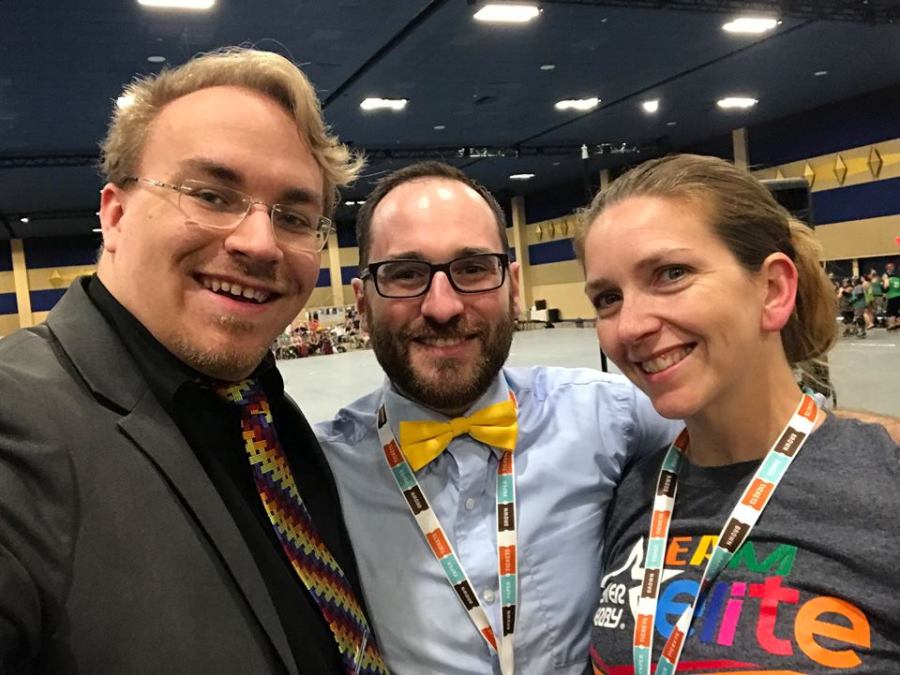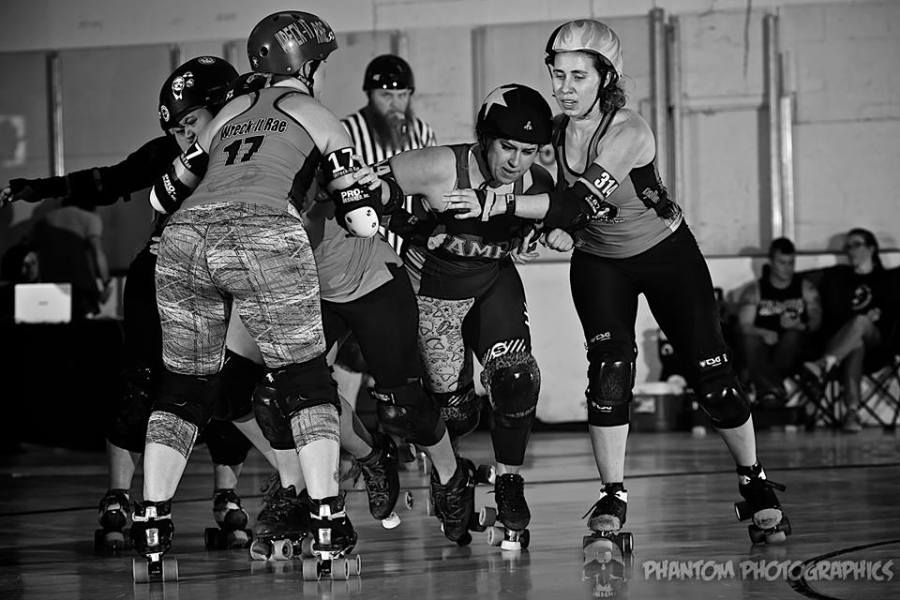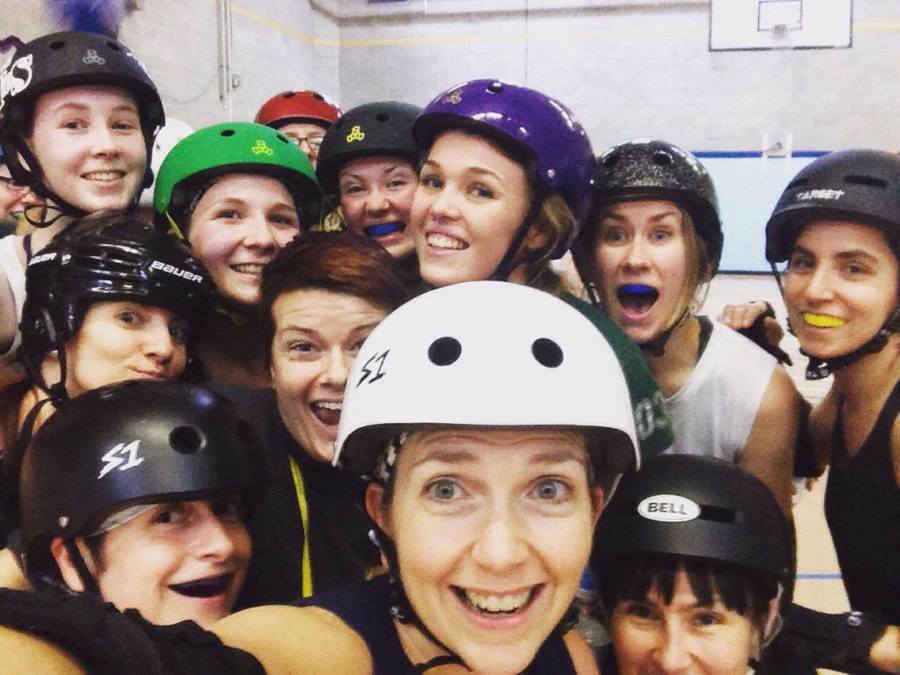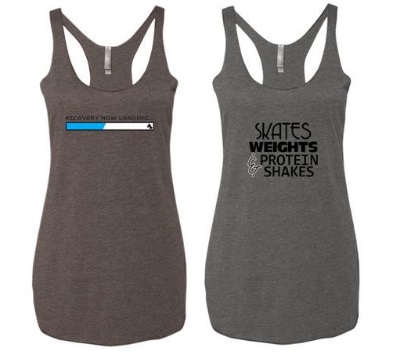What do I mean by ‘buy-in’?
According to the Wiktionary (yea I didn’t know that was a thing until just now):
You know how there are teams and groups where people are willing to go the extra mile, even without threat of punishment? Have you ever seen a rec sport team or a school group where people are putting out information to the public without being asked? Where members are talking up the team in their local coffee shop or favorite dining spot? Where members get sponsors just because they were at their favorite spot and talked to the owner about how great the team is and the owner asked about sponsorship?
You know that feeling when everyone is in for the same goals, everyone feels valued, and they all believe in the mission of the team?
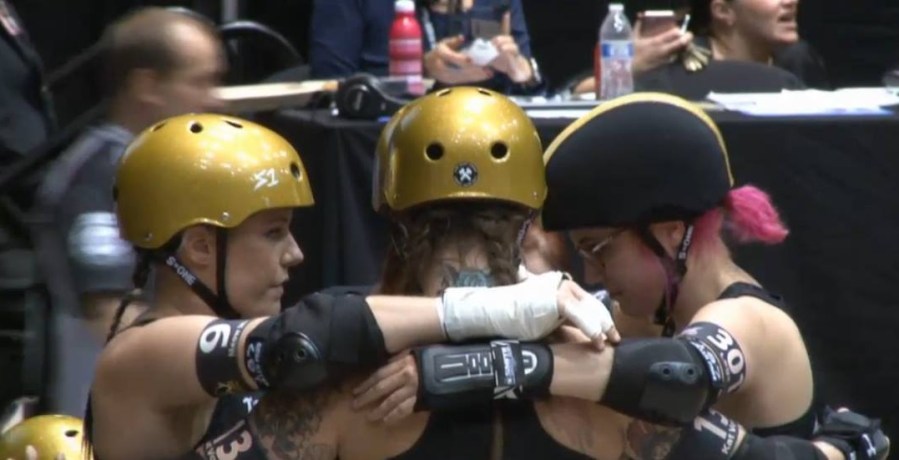
That’s buy-in.
Why should we value the buy-in of our members?
The more a person buys into a team, the more likely they are to perform league duties without being begged, they are more likely to train hard, and are more likely to have a positive attitude at practice. I am speaking of skaters, coaches, announcers, officials, EMTs, and every other piece of the derby pie. We all matter, and we all make the derby machine run. When we feel valued, we are motivated to work harder on and off the track. When your membership works off track the result is:
- Increased membership & volunteers
- Increased in transfers
- Increased membership & volunteer RETENTION
- Increased sponsorship opportunities
- Increased attendance at games
“I’m happy at practice, and I want to tell everyone, so I do! SQUEE!” When we value our people, and they work harder on the track, the result will be:
- More effective practice sessions, thus an improvement in game play
- More effective official training, bringing up the level of all who participate
- More realistic scrimmage/game situations, with a more complete production element (when you have full officials and announcers show up to a scrimmage night, it is incredible)
- Volunteers will travel outside of the league and bring back valuable information and experience to increase the quality of home scrimmages and games.

So how do we increase buy-in of our roller derby league, individual teams, and yearly tournament events?
Integrity
Do you have rules? By-laws? Stick to them. I don’t care who they are. If you want a special exception to be made, take it to a vote. “But that’s too hard!” It shouldn’t be, because you shouldn’t be breaking the rules to begin with. If you’re going to try to as leadership, you should have to do extra work. By-Laws should be reviewed regularly, and as situations come up within a league culture, the league or representatives of them can discuss actions and revisions. Nothing will destroy the buy-in of your membership like breaking the rules for certain people.
Integrity also needs to be in how we treat one another, on and off the track. If you say you’re going to do something, do it. If a league is going to do something, do it. That’s everything from donating money to the charity you’ve partnered with to being honest with skaters who are seeking feedback and a path to charter teams to following through on events and appearances with sponsors.
Let me say it a little clearer: Don’t lie to people. It’s not nice. People won’t trust you.
Transparency
Training, rosters, staffing changes, vision of the league, finances, and goals of the team are all things to be transparent about. If your charter team suddenly has new faces on it, while your B-team sits in the wings wondering where that person came from … chances are you have some things to come clean about. This goes for other volunteers too:
Let’s say you’re never staffing that announcer who’s actually pretty ok because you want to give your regulars more opportunities, but you never tell that announcer. You just let them keep signing up on the sheet. Maybe you don’t let the newer refs skate during home team games because you would rather bring in outside officials, but you never tell those home team refs what they need to do to improve. These are cases where you need to re-evaluate your communication and transparency about your goals. (‘You’ as in the grander ‘you’ of leadership).
In this sport, we all control our own destiny, we all get to decide what type of team and culture we give our beloved energy and hours for. We just want to know what’s going on. When skaters feel like secrets are being kept from them, resentment grows. Transparency and communication get easier as we practice it. Just like the sport.
Let me say it a little clearer: Don’t lie to people. It’s not nice. People won’t trust you.
Structure
There are plenty of studies that show that clutter raises anxiety. It should be no surprise that clutter and frazzle in an organization can have the same effect on its membership. Tryouts, charter changes, rosters, and training models all need to be structured. We crave structure. It keeps us informed, it gives us goals and focus. Structure allows us to be the best player and team possible!

Many leagues only have new skater tryouts during prescribed times of the year to keep the program focused and moving forward. Why not for your charter teams? Why not have quarterly skill checks that double as charter tryouts, but also to give feedback to your skaters so they all know what they should be working on? Some teams fear to change the charter because of seniority, having tryouts a few times a year can alleviate that pressure to not disappoint people. Overall, there needs to be some sort of path to the All-Stars, even if your team is not competitive. It gives people something to shoot for, and can up the commitment of skaters during practices and over the year. Remember that integrity thing I just talked about? Charters, feedback, and roads to higher levels of play are what we need the most honesty about.
Moving to the back-end, structure in your business is critical. If your league or team has shoddy leadership practices or business framework, then money is just going to fall through the cracks, and people are going to transfer as soon as they are brave enough. Lack of leadership or behind-the-scenes organization leads to last minute decisions, people getting left out of the loop, events being mishandled, and people being mistreated. We’ve all seen that league that might play derby well for a while, but their infrastructure is a hot mess and they are constantly turning over people.
Keep in mind: Just because you have structure, like by-laws, it doesn’t mean the work is done. Things need to be able to change over the years to accommodate the shifting trends of your league. I have seen many teams get stuck in the circle of “Well this is how we do it”. It’s fine that it’s how you do it, but is it the most efficient way to do it, or is that way to protect certain people/convenience/because you like it better? This means everything from charter team structure to board structure to captain expectations and behaviors.
Believance
Your people are awesome. Seriously. Even that one skater that is always nosing into people’s drama. Or the one that has severe anxiety and ends up doubting themselves by the end of most scrimmage practices. So is that one super bossy one that really is just covering up their insecurity. And the one that is really tiny that you think can’t be a successful jammer but really is. And the one who chatters when they’re nervous. And the one that always looks mad. And the one that is injured.
They’re all awesome.
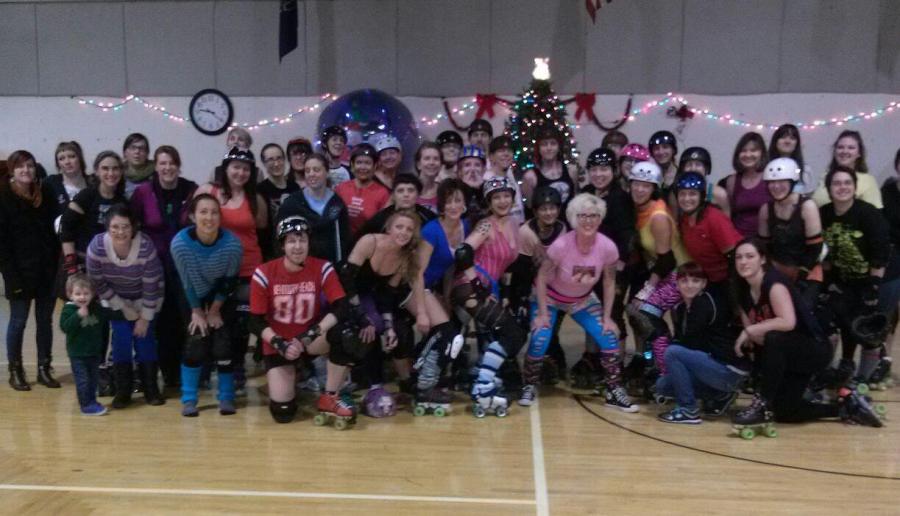
Guess what isn’t awesome? Telling people that they’re not good enough because they look mad. Or because talk to themselves. Or because don’t hang out at the pool with the team, but watch the derby instead. Or because they officiate. Or because talk a lot. Or because they’re trans. Or because they don’t fit the social norm. Or because they have a kid and can’t travel to outside tournaments to officiate.
Leadership has to put value and believance in all of their people. If you have a charter of 9 or a charter of 19, you have to value every person and build them up. Not just with words, with actions. Pumping them up at practice is necessary, but when it comes to game day, you need to keep up the high fives and positivity.
If you tell your jammer rotation that you DEFINITELY have faith in them, but then turn around and invite skaters from other teams to jam for you on game day – you are not showing that you have confidence. You have just undermined all your effort to build up the buy-in of your skaters because they were just benched for a ‘ringer’ from another team that didn’t practice with the squad all year. You have been shown that they are replaceable, and that a W on the scoreboard means more to leadership than their development and commitment.
If your team only does charter changes when an old friend comes back, while others continually struggle to get attention by the selection team, what motivation does anyone have to improve?
If leadership always gives feedback as, “Well you’re little so…” or “you’re big for a jammer so…” how is that going to make the skater feel valuable? They have just been told that their body is wrong, and so how can they think that leadership believes in them?
If you tell your announcer that they are great, and experienced and valuable, but then never staff them for home games, how long do you think that announcer will stick around?
Now I ask you:
Would you want to brag to your local coffeeshop about your team after these experiences?
Believe in your people and their abilities and you’ll never force someone to question whether they should pass out those flyers or tell their friends to transfer.

Conflict Resolution
When problems do come up (and they will) having an action plan of addressing it in an adult manner is key. Friends of mine who just moved to us from Albany introduced me to the OUCH / OOPS method that I absolutely love. If you hurt someone with something you say or do, you say OUCH. They are then obligated to take a second, digest what has happened, and say OOPS as the acknowledgement. From there you decide if you want to talk it out now, or deal with it later – either with someone or one on one.
We should also keep in mind to assume the best intentions. We have a lot of people in our sport, and a lot of delivery methods in our voices at different times. I speak way differently on the track then I do in coaching mode, with my team, or even with my pod of blockers. Voices are tricky to navigate, we all have different experiences. One person may hear inflection and be unaffected, and another person is going to hear a voice and subconsciously be triggered remembering the way their father would talk to them before hitting them.
We do not just navigate roller derby when we have interpersonal reactions, and we have to keep it in mind. Getting mad that someone misunderstood you only exacerbates the issue. We have to be understanding that people will hear us differently, since some of us just have inflection and cadences that do not always jive in the ears of others. People need to be open to the fact that they may have one of those voices that is going to be misunderstood and work to be understanding (while the people around them need to assume best intentions).
Trust me.
TRUST ME.
I’m pretty sure over the years that I (and a few of my friends) have been held off of teams, rejected from tournaments, and denied access to the pool because of our voices, cadences, and individuals assuming the worst instead of the best. We have to always strive to do better. I always preach self-assessment. That’s for both sides. Don’t assume the worst. If you have a question, you can always ask. Or OUCH it. That said, think about what you’re saying. How you’re saying it. How you can always say it better or different.
So what can we do? What are some action items to make things better?
Changing a league culture and leadership mentality is not something that happens overnight. Having a team of individuals that create a list of league norms and expectations is very helpful. And don’t just make a list. Talk about them. Post them. ENFORSE THEM. Empower everyone in the league to talk about how to make their time better, and how to hold people to the new norms.
League surveys are also a great easy and quick way to get a beat on the way your skaters are feeling. If you’re not doing one at end and halfway point in the year, you should. Ask the hard questions:
- Do you feel valued? Why/why not?
- How do you feel the tryout structure could be improved?
- Describe the league culture in 5 words.
- How long do you see yourself staying with our league? Are you considering transferring?
- How would you rate the communication of leadership to skaters?
- Are you satisfied with the roles everyone has in the league? How do you think they could improve?
Again these are just some example questions, there are a ton you could ask, just depending on where your league is, and how the vibe of the whole place has been recently.
Keep in mind: Officials, announcers, and individual teams can have their own cultures as well. If the overall culture of the league is healthy and happy, but a sub-culture has undercurrents of turmoil, that could spill over into the league culture eventually. Each team is responsible for creating and maintaining cultural norms within their groups.
If everyone is empowered to make it a happy place, and if issues are dealt with as they come up, and if we all assume the best intentions, and feel valued and heard – why wouldn’t you buy into that league?

I truly believe that no one wants the experience of roller derby to be miserable for anyone, and if the buy-in of a team is low, it’s usually just because the people in leadership don’t realize there is a problem. In all my years, the most recurrent theme I have seen is this:
Leadership does not see the issues on the ground floor because they are not on the ground floor, and the system works great for them. Why would they actively change something that they don’t see as an issue?
So that means it’s up to the people who see the issues to raise the concerns. Be brave enough to come to your board with ideas and ways to solve the problems you see. Or at least ask if you can have a round table with them and some others to talk out personal issues. It’s not always fun. It’s definitely not comfortable, but to increase buy in of all skaters people have to be unafraid to say something.
Increasing how much you care about the buy-in of your league will have great results (maybe not immediate, but over time): More skaters, more sponsors, more people at games, more people promoting the events, more people coming to events, more opportunities to do events, etc etc
Alright so go out there, talk to your friends. Believe in your team. Encourage your volunteers. Hear what people say. Be fearless in the face of change. And go make the best team you can!

** Cover photo by Keyesboard 2014

